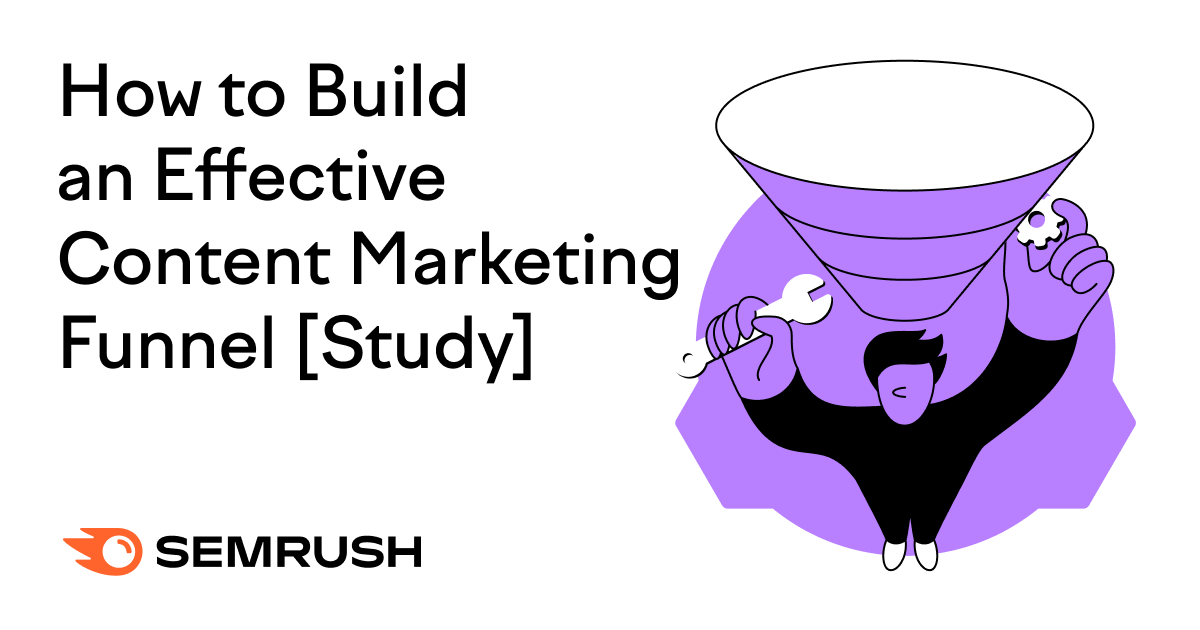You want more customers, whether they come to you online or in person. And if we’re honest, that’s something we can relate to.
Now that you have a nice website and SEO-rich content, customers should come running, right? Not necessarily.
Question: So how do you gently and strategically guide customers toward your products and services?
Answer: With a well-constructed content marketing funnel.
Successfully mapping your content for the funnel stages can be simple with the right guidance, and we’re here to help. Let’s dive in.
What Is a Content Marketing Funnel?
A content marketing funnel is a model that helps a brand visualize how to successfully use content to attract potential clients and guide them through their journey from the first interaction to conversion into a paying customer. It’s usually part of a bigger content marketing strategy.
When analyzing and building a content marketing funnel, we specifically refer to the way we use various types of content to engage and convert users.
For those who need a refresher, let’s briefly review the stages of the content marketing funnel:
- Top of the funnel (TOFU): attracts attention
- Middle of the funnel (MOFU): generates leads
- Bottom of the funnel (BOFU): drives conversions
The crucial question you have to answer as a marketer is, what content will satisfy the needs of your potential customers and help them build a relationship with your brand at a specific stage?
Let’s look at the stages more closely and find out which content is most suitable for each stage.
Top of the Funnel (TOFU): Sparking an Interest
The top of the funnel is the starting point of the buyer journey, and it’s the most populated stage. Here, people aren’t yet ready to buy and have probably never heard of your company.
Your goal is to attract their attention, offer the best answer to their queries, educate them, and then gently introduce them to your brand.
TOFU is usually measured by the following metrics:
- Organic traffic, referral traffic, and total traffic
- Social media engagement (shares, comments, likes)
- Mentions by influencers and media
- On-site engagement metrics (bounce rate, time spent on page)
- Newsletter and social media subscriptions
The most effective types of content for this stage tend to be more educational and provide a piece of value, which helps drive users to your website.
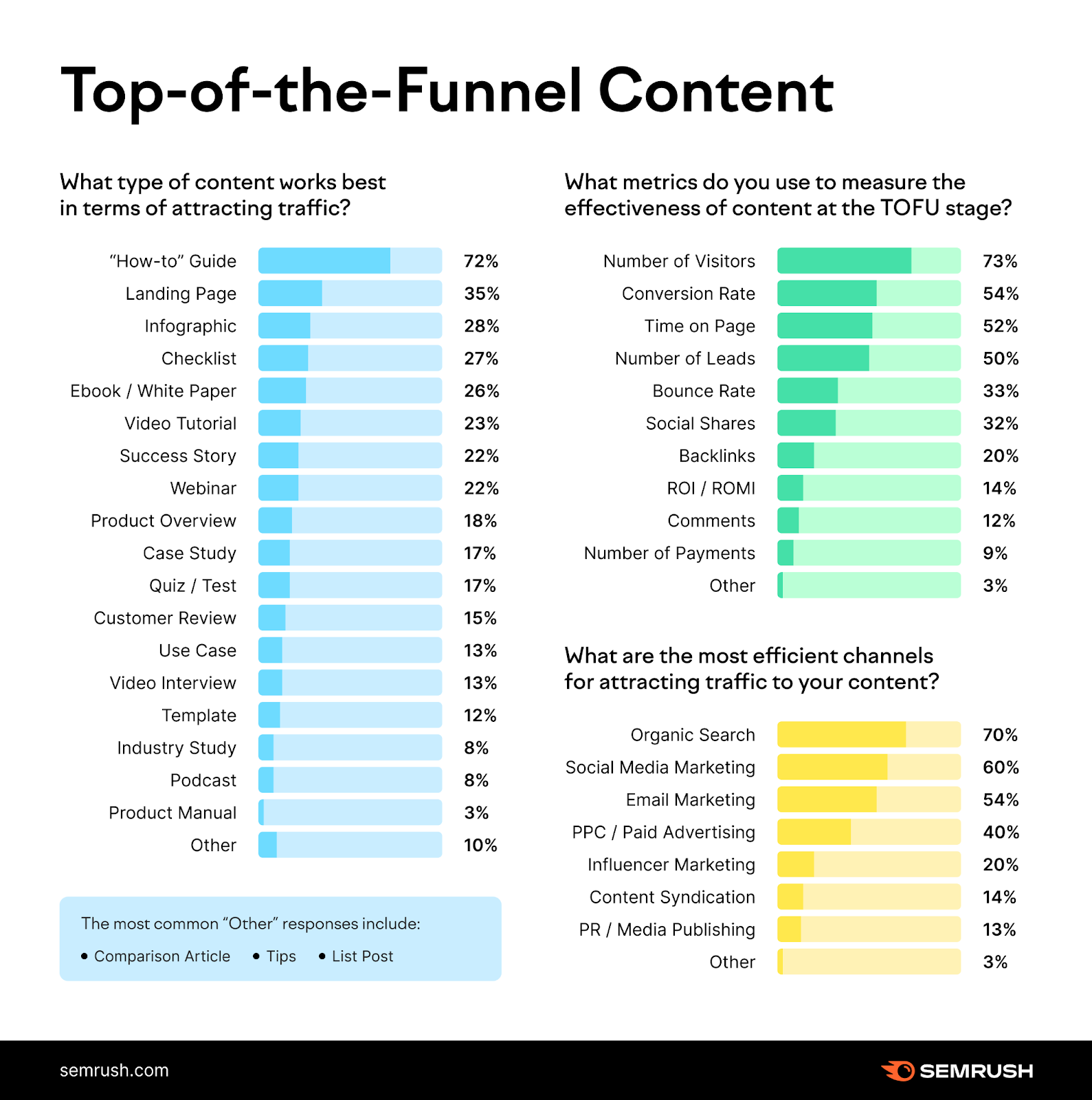
Based on our study, these are the top five types of content that work best for top of the funnel:
- “How-to” guides
- Landing pages
- Infographics
- Checklists
- Ebooks
Guides, for example, can help a customer solve a specific problem and show your prospects that you are an expert in the field.
Thought leadership content created by experienced Subject Matter Experts (SMEs) can also position you as an expert in the field.
So how do customers find these pieces of content?
Typically, organic search is the primary channel used in this stage for finding guides, infographics, checklists, videos, and ebooks on a topic.
Social media and email marketing are other useful touchpoints for gathering customers at the top of your funnel if they happen to be followers or subscribers.
To capture those potential customers at this stage, focus on educating the reader, providing value, and sparking their interest in your brand.
Middle of the Funnel (MOFU): Guiding and Educating
At the middle-of-the-funnel stage, the number of people interacting with your content shrinks slightly. However, they are more willing to interact with your content given the proper encouragement.
Here, your goal is to accompany the prospect from an initial idea to an in-depth understanding of how your solution helps.
MOFU content is usually measured by the conversion rates and the number of leads. Typically, middle-of-the-funnel content still generates the most traffic from organic search.
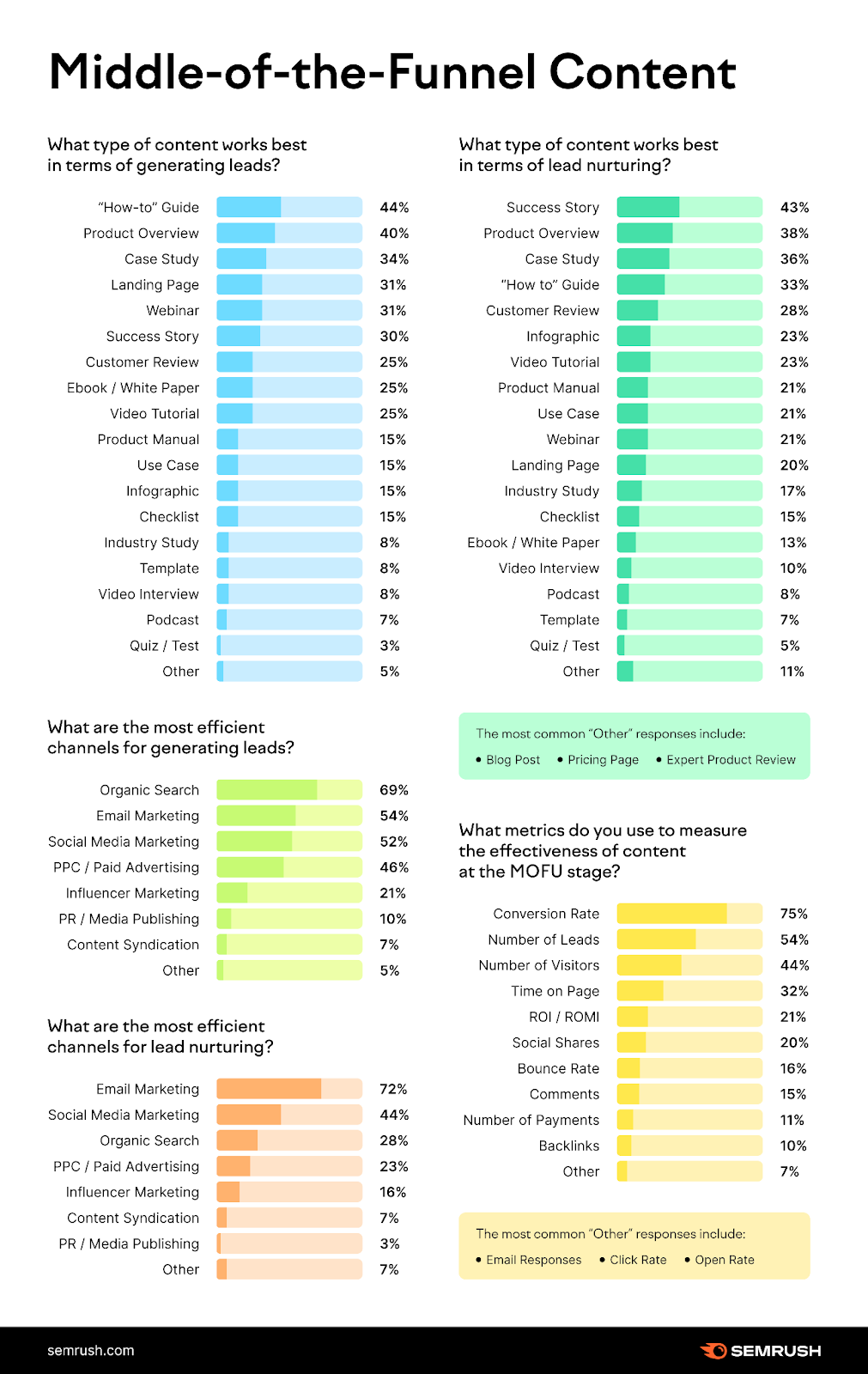
In this stage, the top five commonly used content types include:
- “How-to” guides
- Product overviews
- Case studies
- Landing pages
- Webinars
The content types are more product-oriented to help nurture prospective customers into seeing the true benefits of your product or service. It is also an opportunity for them to engage with your brand more.
Case studies, for example, can show how your product has affected other customers in positive and measurable ways.
Other content types, like webinars (which are usually free and full of information), demonstrate to prospects how your product or service works and can excite them and guide them toward a possible conversion.
But as motivation varies a lot at this stage, you should offer a wide choice of convincing materials and show different ways of using your product.
At this stage, email marketing can be a useful channel to help you nurture leads and move them to the next stage.
Bottom of the Funnel (BOFU): Propelling Conversions
The bottom-of-the-funnel stage is the finish line, where content can help position your brand as superior to competitors, build trust, and accelerate the purchase.
The content you create at this stage should answer very specific questions about your product or service (e.g., how it actually works or what skills are required to deal with it).
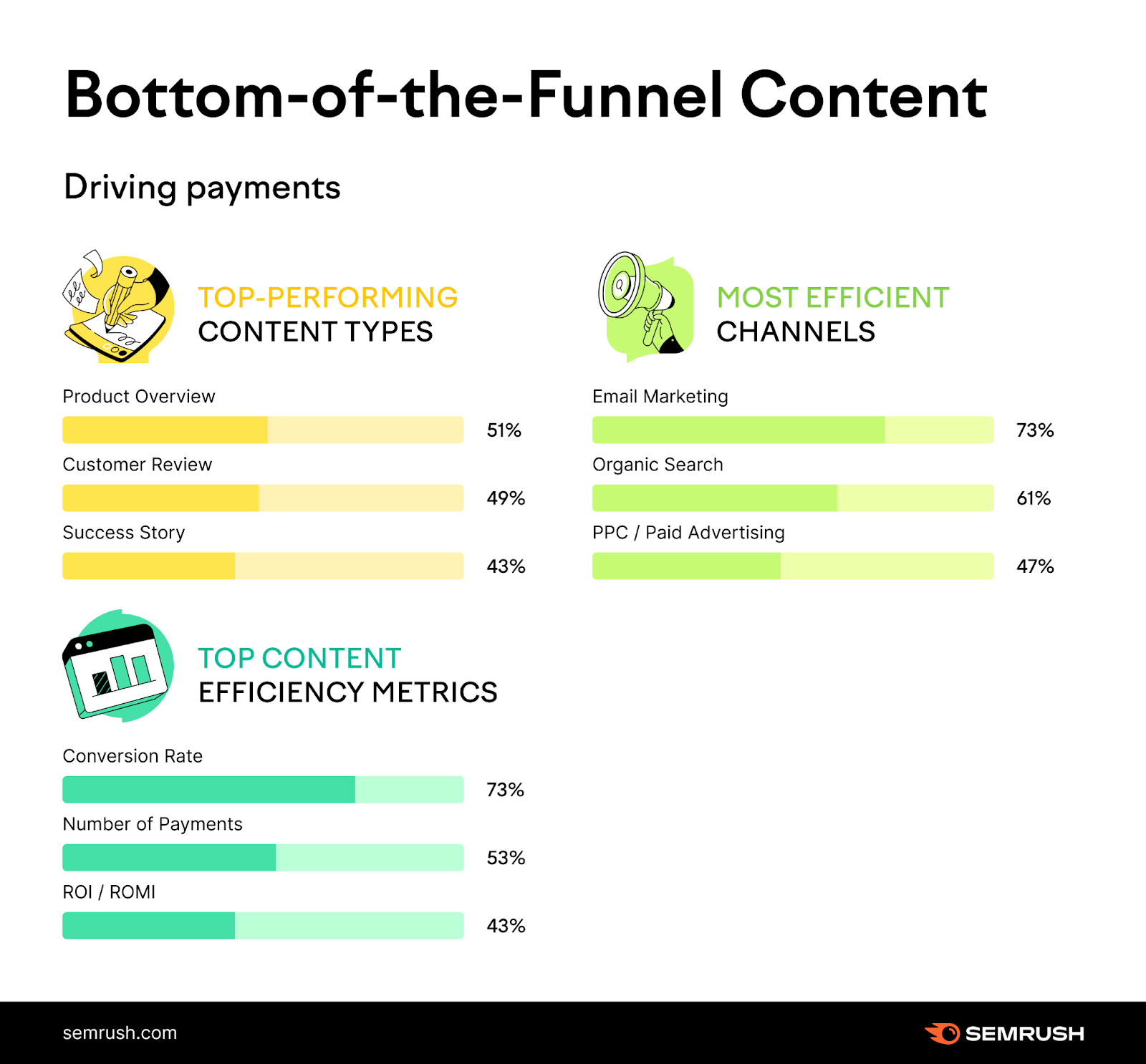
The top three content types for the BOFU stage are:
- Product overviews
- Customer reviews
- Success stories
Case studies, landing pages, and product pages are also extremely important at this stage.
We learned that customer-generated and case-oriented content are some of the most effective types to convince a person to make a purchase. This is because 93% of customers make a buying decision based on reviews.
So, customer testimonials, success stories, and case studies will be valuable sources for convincing a prospect to choose what you have to offer.
Our study found the most effective way to nurture your lead into a conversion at this stage is through email. Organic search and advertising are the next two most efficient channels.
Finally, the key BOFU content metrics include:
- Free trials and demo requests
- Conversions to registered and paying clients
- Revenue
- Content marketing ROI
What You’ll Need To Start Your Content Funnel
According to the survey we conducted, a majority of marketers already create content that speaks to one part of the marketing funnel.
However, in many cases the number of content pieces you create for each stage can be different. For example, you might need more educational content to attract traffic and fewer landing pages to convert them.
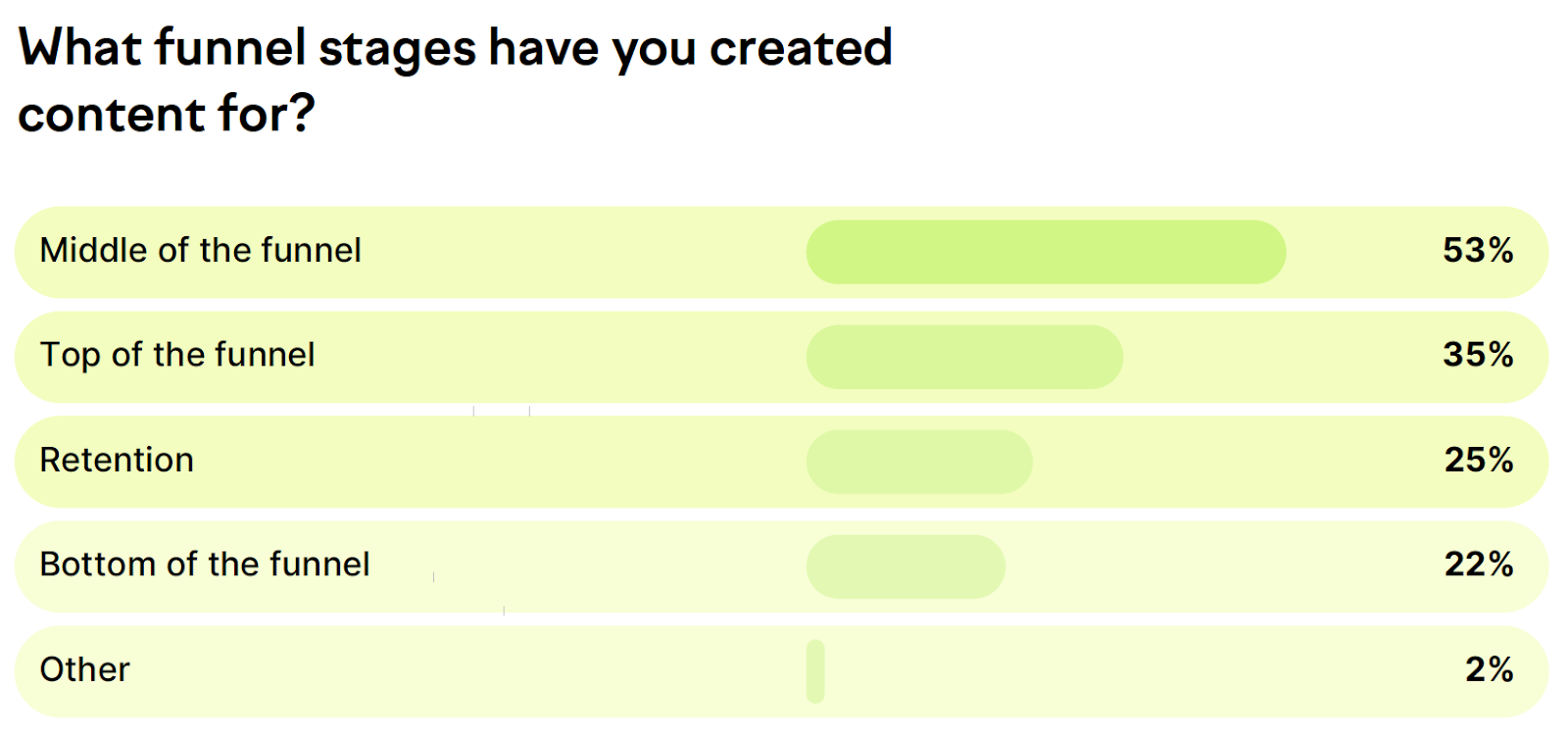
Another important factor is the current objectives of your company.
For example, startups, small businesses, and large enterprises can have completely different goals, which could dictate different content marketing needs.
While newly launched startups might need to focus on generating leads (and creating MOFU content), corporations would be more focused on thought leadership and TOFU content.
But before you get to building your funnel, here are some things you might need:
- An understanding of your audience’s goals or challenges
- An understanding of your audience’s current buyer’s journey
- Clear content marketing goals and KPIs
- Competitors’ analysis to understand your niche better
- A content marketing strategy that highlights all of the above
Practical Ways To Create Content for Each Funnel Stage
Now that you have the information you need to build your content funnel, let’s get down to specific tips for creating content that converts prospects into buyers.
Start by mapping out a rough idea of what content you’ll need to create for each stage of the buyer’s journey, from brand awareness to purchase decision.
Then, start creating that content from the very top of the funnel. However, remember that different businesses might need to focus on different types of content based on their needs and goals.
Creating Compelling Top-of-the-Funnel Content
Solving a prospect’s problems is one of the easiest (and most satisfying) ways to attract attention. And you can help a customer solve their problem at no cost to them through educational and valuable content.
In top-of-the-funnel content, you can:
- Be authentic and honest
- Speak to the main problem or issue
- Answer questions related to the main issues
- Provide a solution to the problem
- Give brief mentions of your products or services
- Include other related sources
- Spark intrigue for your brand or product
It’s important to avoid being overly sales-y at this stage. Focus on the issue, educate, and provide value, first and foremost.

Take this post, How to Become a Better Writer: 14 Expert Tips, as an example.
While positioning yourself as an expert, you can gently sprinkle in product or service mentions that correlate with the topic or issue.
This will help plant the seed that your brand is knowledgeable and your product is worth consideration.
Keep Drawing Them in With Middle-of-the-Funnel Content
Now that you’ve piqued interest in a potential customer, you’ll want to keep drawing them in. And one of the best ways to draw people in is to give them something for free first.
If it’s free and useful, then it’s a win for the customer. If the resource is really good, then they might go on a search for even more useful resources (or products) from you.
As a brand, you’ll also want to demonstrate how you and your product are different from your competitors. You’ll also want to detail how your product is beneficial to the customer.
Always focus on how your product or service makes the customer’s life easier.
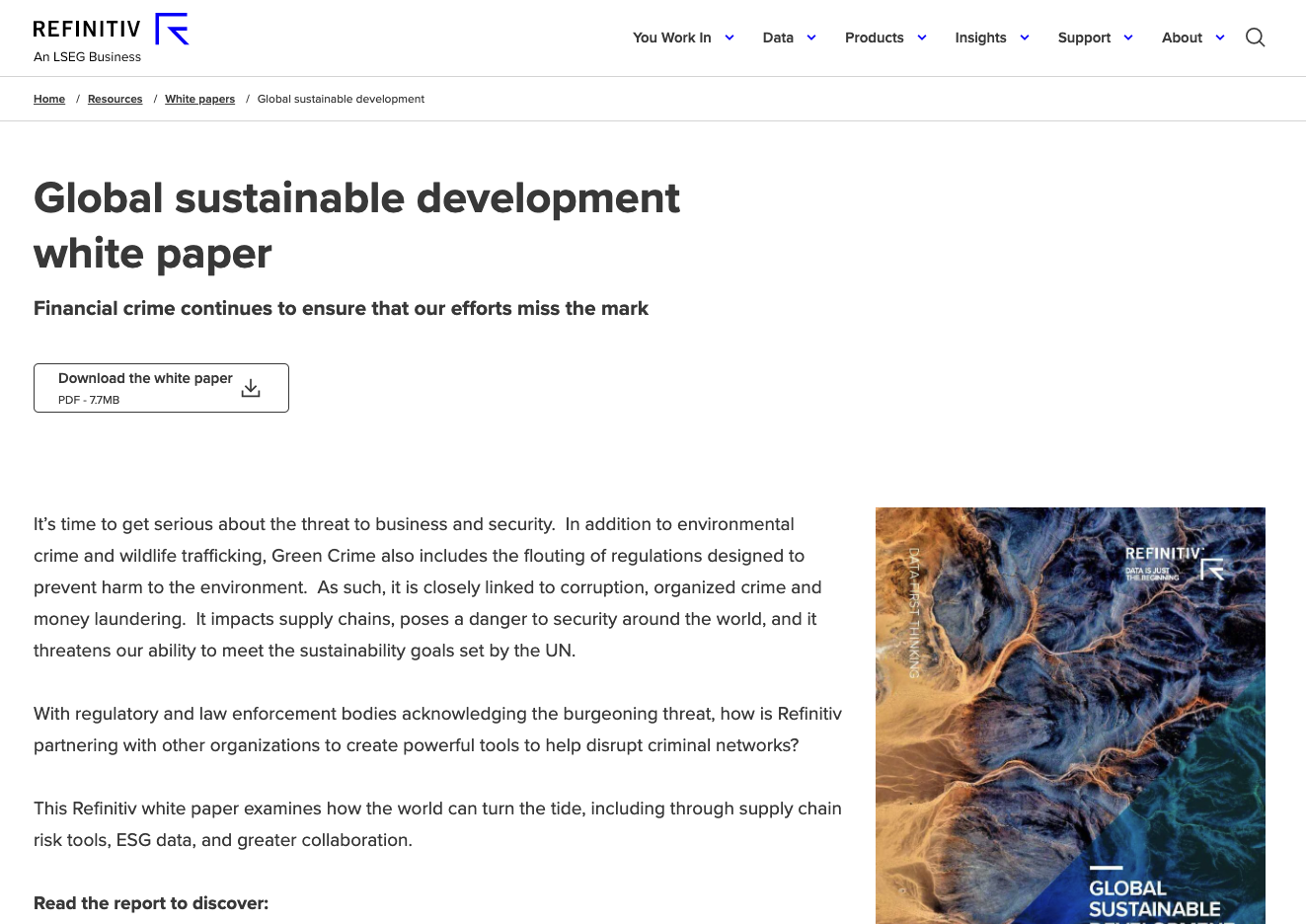
For example, Refinitiv positions its white paper as an invaluable book of data that promises to aid businesses in preventing financial crime.
The downloadable white paper further positions Refinitiv as an expert in the field, showcases how Refinitiv’s data can be used to solve a problem, and provides even more value to the customer.
Strategically Converting with Bottom-of-the-Funnel Content
So you grabbed their attention and gave them a little taste of what you have to offer, and your prospect pool has likely been drastically narrowed.
By now, the user is on their way toward making their buying decision, so you’ll need creative ways to persuade them to choose you.
And what would you trust more than hands-on experience or reviews?
This is where your customer-generated content will help you attract even more customers because, as we mentioned earlier, 93% of people make a buying decision based on a review.
Zendesk is a great example of how to incorporate customer testimonials into a website.
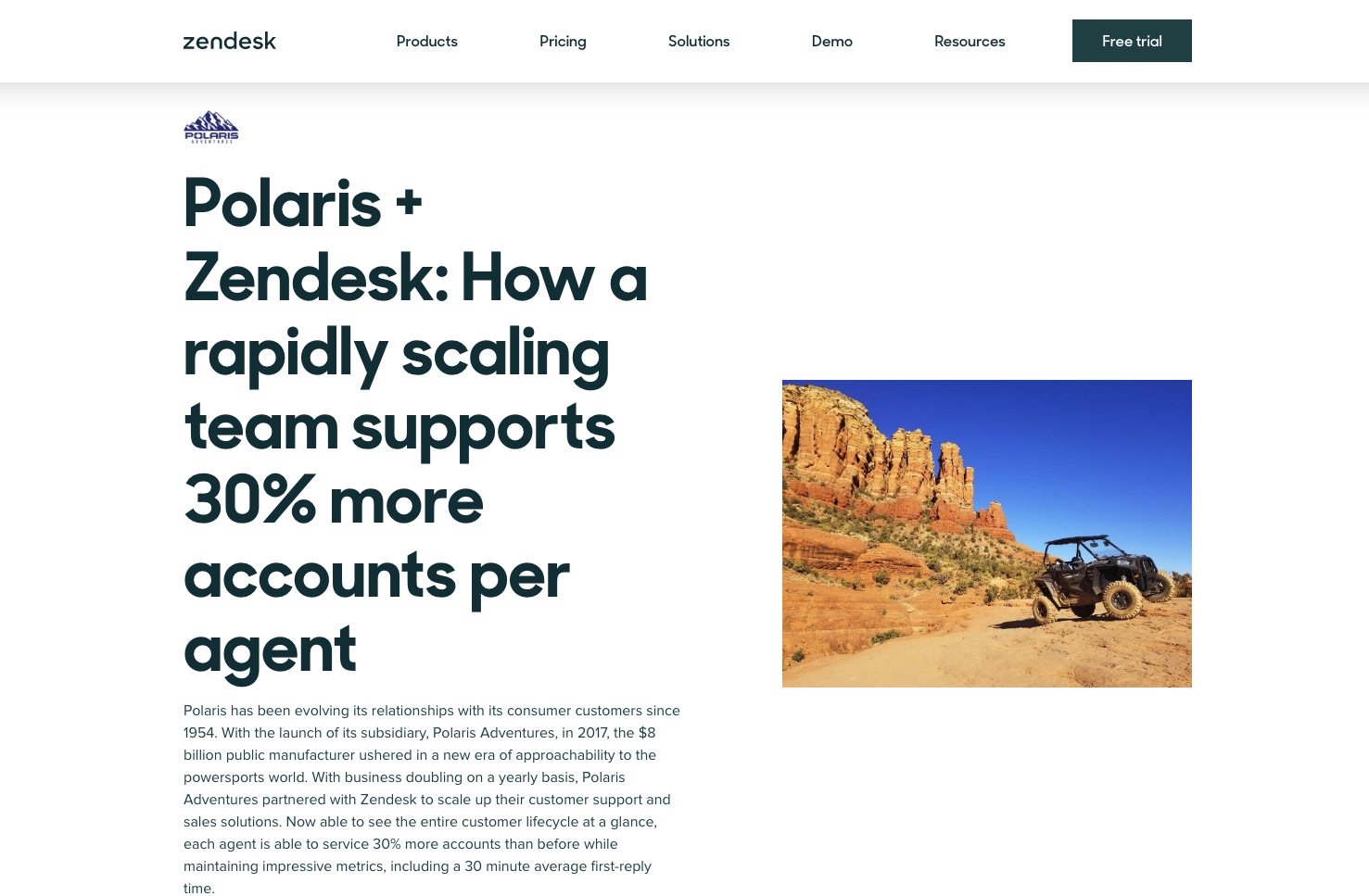
In this stage, you can hyper-target your leads with:
- CTAs
- 14-day trials
- Product vs. competitor comparisons
- Demos
- Consultations
- Genuine testimonials from happy clients
Boast a little bit more about just how awesome your product really is; product demos are a great strategy here.
For example, you can send out a follow-up email to customers who attended a webinar and invite them to demo your product and service for free. Here, you can give them an exclusive backstage pass to everything your product or service does.
And at the end of it, you can offer up a 14-day free trial or a heavily discounted first year of services to get them motivated to buy.
Make Your Content Funnel a Success
There are multiple ways to make sure you’re creating the right content for your funnel and maintaining customer interest. It’s just about finding the method that works best for you and your customers.
Be prepared to do a good amount of testing, be willing to improve on what’s not working, and remember to celebrate your wins!
And if you ever need ideas to help you find your way, refer back to this simple guide or reference our ultimate guide and let it be the map you need to direct you (and your customers) toward success.

